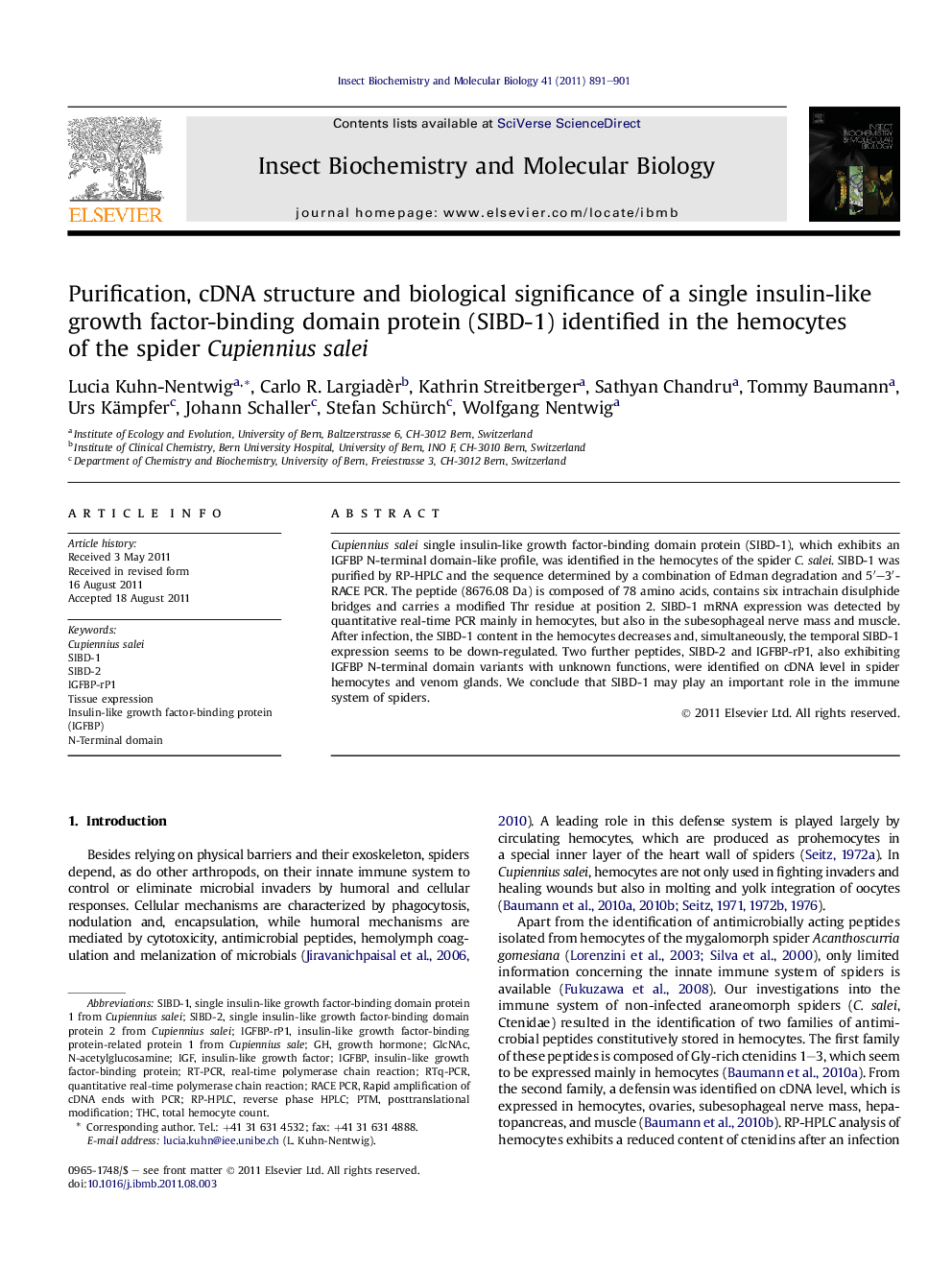| Article ID | Journal | Published Year | Pages | File Type |
|---|---|---|---|---|
| 1982304 | Insect Biochemistry and Molecular Biology | 2011 | 11 Pages |
Cupiennius salei single insulin-like growth factor-binding domain protein (SIBD-1), which exhibits an IGFBP N-terminal domain-like profile, was identified in the hemocytes of the spider C. salei. SIBD-1 was purified by RP-HPLC and the sequence determined by a combination of Edman degradation and 5′–3′- RACE PCR. The peptide (8676.08 Da) is composed of 78 amino acids, contains six intrachain disulphide bridges and carries a modified Thr residue at position 2. SIBD-1 mRNA expression was detected by quantitative real-time PCR mainly in hemocytes, but also in the subesophageal nerve mass and muscle. After infection, the SIBD-1 content in the hemocytes decreases and, simultaneously, the temporal SIBD-1 expression seems to be down-regulated. Two further peptides, SIBD-2 and IGFBP-rP1, also exhibiting IGFBP N-terminal domain variants with unknown functions, were identified on cDNA level in spider hemocytes and venom glands. We conclude that SIBD-1 may play an important role in the immune system of spiders.
Graphical abstractFigure optionsDownload full-size imageDownload high-quality image (126 K)Download as PowerPoint slideHighlights► We describe the purification of SIBD-1 by RP-HPLC from hemocytes of the spider Cupiennius salei and its cDNA sequence. ► With RP-HPLC and RTq-PCR we have investigated the tissue specific expression of SIBD-1 after infection. ► SIBD-1 (8.7 kDa) is composed of 78 residues and contains 6 disulphide bridges. ► The peptide carries a posttranslational modification and exhibits an IGFBP N-terminal like superfamily domain. ► Two further members (SIBD-2 and IGFBP-rP1) were identified on cDNA level in spider hemocytes and venom glands.
